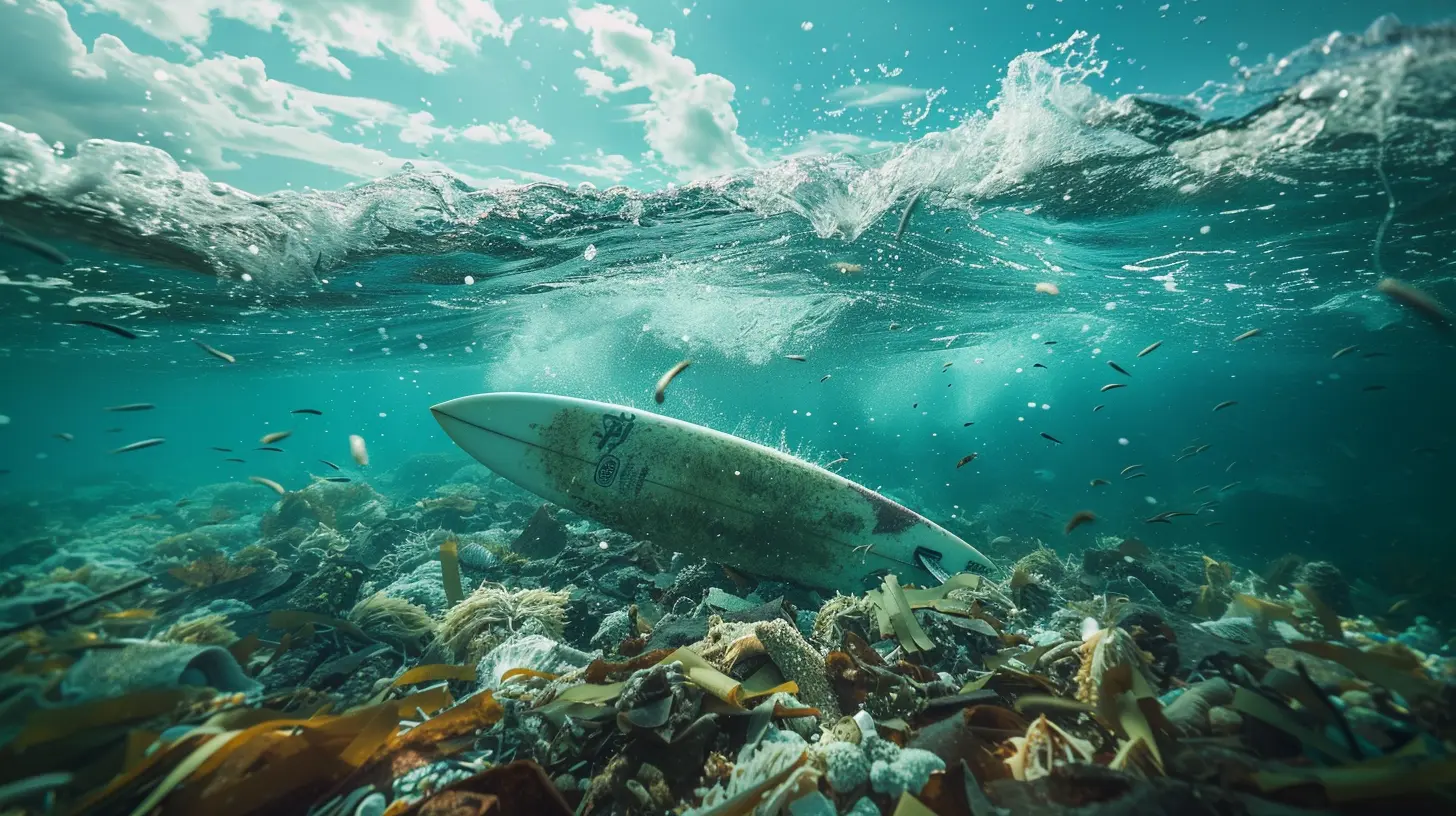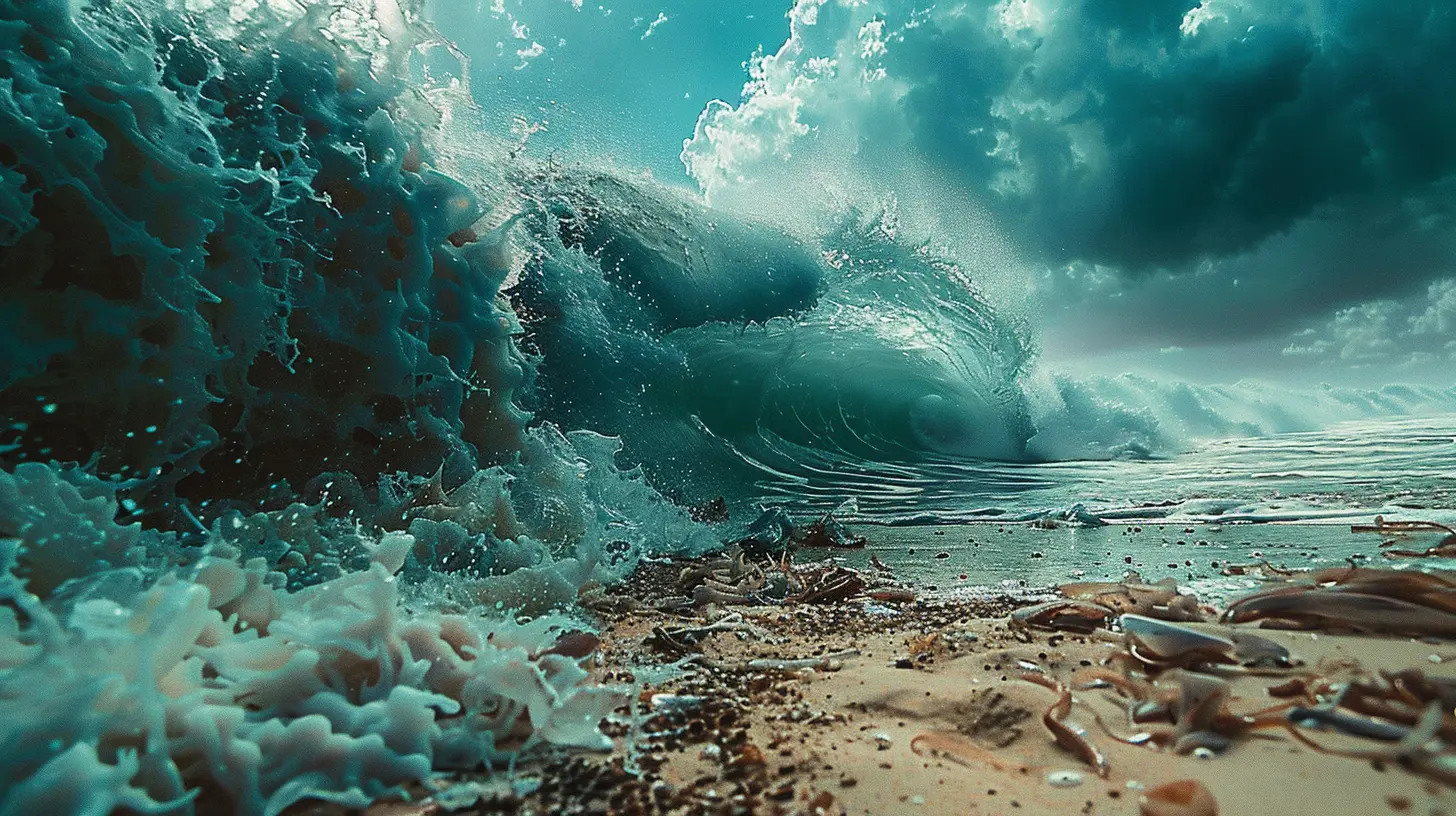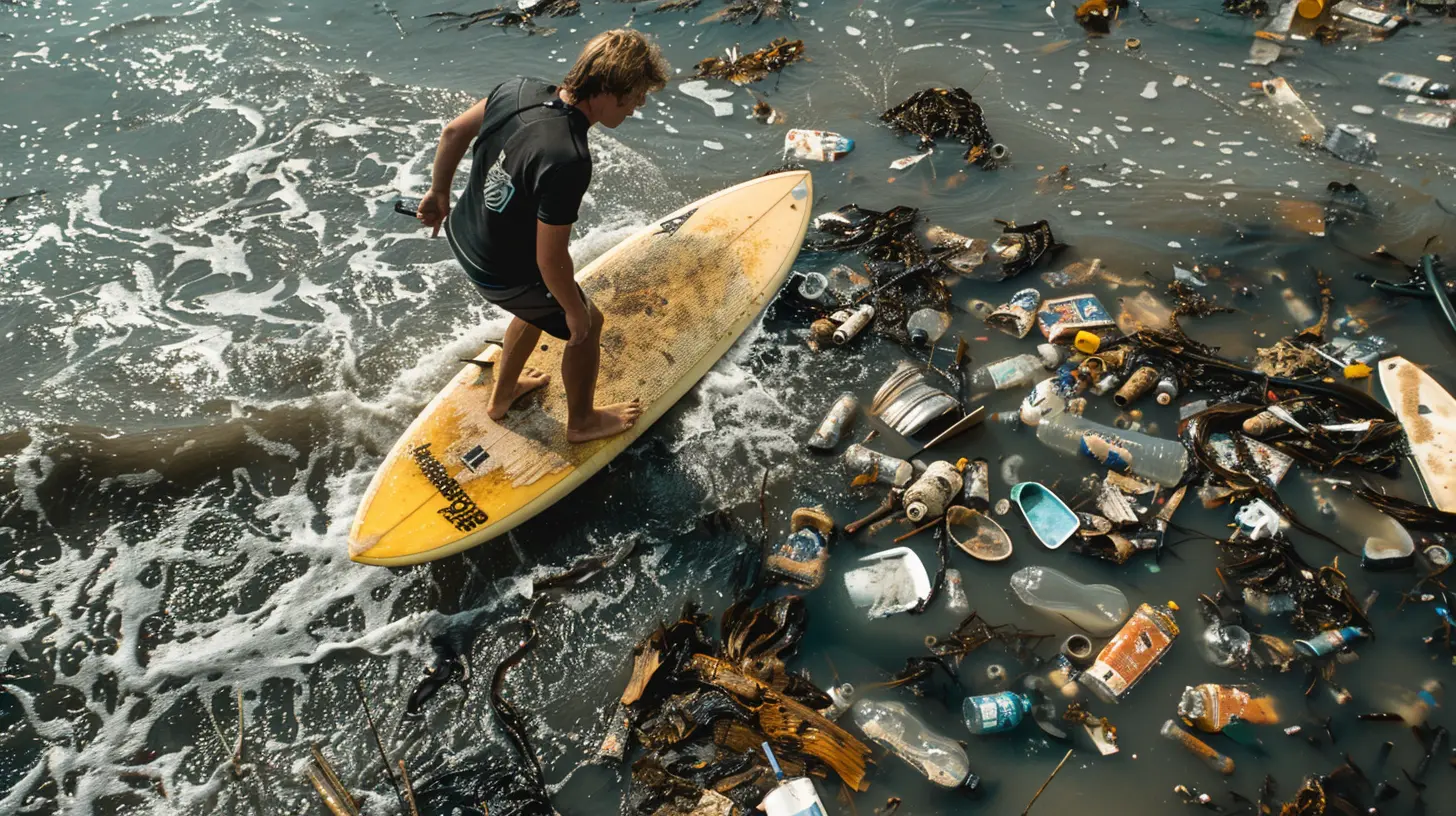10 April 2025
Surfing is more than just a sport; it's a way of life. There's nothing quite like the feeling of riding a perfect wave, feeling the spray on your face, and being one with the ocean. But have you ever stopped to think about how surfing impacts the environment?
While it may seem like an eco-friendly activity, the truth is that surfing has its own environmental footprint—from the production of surfboards to travel emissions and even the gear we use. The good news? There’s plenty we can do to minimize our impact and help keep our oceans clean for future generations.

How Surfing Affects the Environment
Even though surfing itself doesn’t pollute the ocean like industrial waste or plastic dumping, the industry that supports it can have significant environmental consequences.
1. Surfboard Manufacturing and Pollution
Most surfboards are made from polyurethane (PU) or expanded polystyrene (EPS) foam, both of which are derived from non-renewable petroleum-based products. The process of making surfboards involves toxic chemicals, such as resins and fiberglass, which release harmful volatile organic compounds (VOCs) into the atmosphere.And let’s be real—surfboards don’t last forever. Broken boards often end up in landfills, where they take centuries to break down.
Solution: Opt for eco-friendly surfboards made from sustainable materials like recycled foam, algae-based resins, or even wooden boards. Support brands committed to sustainability and ethical production.
2. Wetsuits and Their Environmental Cost
Neoprene, the material used in most wetsuits, is another petroleum-based product that has a hefty carbon footprint. The production process is energy-intensive and leaves behind waste that’s hard to recycle.And when you're done with an old wetsuit? Most of them end up in landfills, where they don’t degrade.
Solution: Look for sustainable wetsuits made from natural rubber sources like Yulex. Brands like Patagonia and Vissla now offer eco-friendly alternatives that perform just as well—or even better—than traditional neoprene suits. You can also donate or recycle old wetsuits instead of throwing them away.
3. Travel Emissions from Surfing Adventures
Let's not sugarcoat it—surfers love to travel. Whether it's chasing the perfect wave in Indonesia or heading to the beaches of Hawaii, surfing often involves hopping on planes, which significantly contributes to carbon emissions.Driving to local beaches regularly also adds up over time, increasing our carbon footprint.
Solution: If you must travel for waves, consider offsetting your carbon emissions by supporting reforestation projects. Even better, stick to local surf spots whenever possible. The waves at home might not be as exotic, but they’re just as rewarding when you think about the positive environmental impact.
4. Plastic Waste and Ocean Pollution
Ever noticed how much plastic washes up on the shore? From plastic bottles to discarded fishing gear, the ocean is drowning in waste—and surfers often see it firsthand.Wax packaging, sunscreen tubes, and even surfboard leashes contribute to plastic pollution. If we’re not careful, these small items can add up and harm marine life.
Solution: Use reef-safe sunscreen, buy wax that comes in biodegradable packaging, and pick up trash whenever you're at the beach. Even simple efforts like bringing a reusable water bottle instead of buying plastic ones can make a difference.
5. Damage to Coastal Ecosystems
Some surfing hotspots are located in delicate coastal ecosystems, including coral reefs and mangroves. Constant foot traffic, boat tours, and surf tourism can lead to habitat destruction, erosion, and disturbance of marine wildlife.Solution: Respect the environment. Avoid stepping on corals, stick to designated beach paths, and support local conservation efforts that protect these fragile ecosystems.

What You Can Do to Help
Now that we’ve broken down the environmental impact of surfing, let's talk about what you can do to be part of the solution.1. Choose Sustainable Surf Gear
Invest in eco-friendly surfboards, wetsuits, and accessories. Look for brands that prioritize sustainability and ethical production. Supporting green companies sends a message to the industry that sustainability matters.2. Reduce Your Carbon Footprint
Carpool with friends when heading to the beach, cycle whenever possible, and consider surfing locally rather than flying to distant surf spots. If travel is necessary, look into carbon offset programs to counterbalance your environmental impact.3. Use Reef-Safe Products
Many sunscreens contain harmful chemicals like oxybenzone and octinoxate, which contribute to coral bleaching. Opt for reef-safe sunscreens that use non-nano zinc oxide instead. Additionally, choose biodegradable wax and eco-friendly surfboard leashes.4. Participate in Beach Cleanups
If you love the ocean, why not give back? Join a local beach cleanup or organize your own. Picking up just a few pieces of trash every time you surf can make a significant difference over time.5. Spread Awareness
Share what you know with fellow surfers! The more people who understand the environmental impact of surfing, the better. Encourage friends and the surf community to adopt eco-friendly habits. Even small changes can lead to big results when more people get involved.6. Support Ocean Conservation Organizations
Groups like Surfrider Foundation, Save The Waves Coalition, and Oceana work tirelessly to protect the ocean. Donating, volunteering, or even just raising awareness about their efforts can help amplify their impact.
Final Thoughts
Surfing connects us with nature in a way few other sports can. But with that connection comes responsibility. By making sustainable choices—whether it’s the gear we use, how we travel, or how we care for the ocean—we can help protect the environment for future generations of surfers.It’s not about being perfect; it’s about doing better. If every surfer made small, eco-conscious choices, imagine the collective impact we could have. So next time you wax up your board and paddle out, think about how you can give back to the ocean that gives us so much.






Cadence Miller
Great article! It's inspiring how we can enjoy surfing while also protecting our beautiful oceans. Let's make a difference!
April 18, 2025 at 12:58 PM